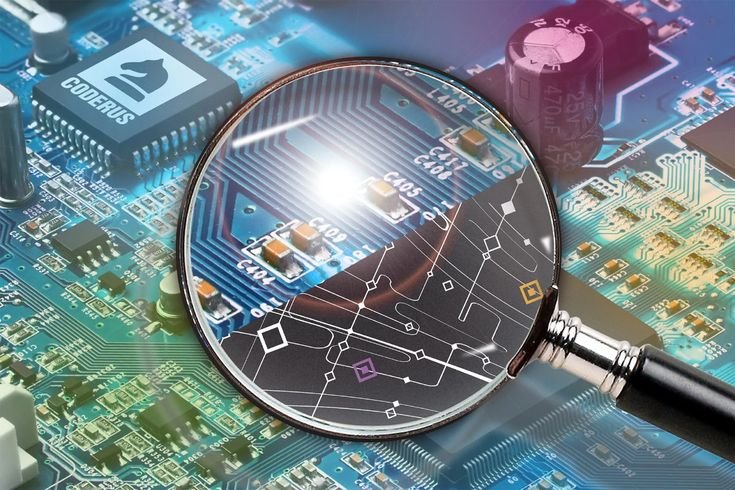Embedded systems are specialized computing systems that are designed to perform dedicated functions within a larger system. Unlike general-purpose computers, embedded systems are often optimized for specific tasks, offering unique characteristics that make them ideal for various applications, from consumer electronics to industrial machinery. In this blog, we’ll explore the key characteristics of embedded systems and why they are crucial in the design and operation of modern devices.
1. Dedicated Functionality
One of the most defining characteristics of an embedded system is its dedicated functionality. Unlike general-purpose computers, which can run a wide range of applications, embedded systems are designed to perform specific tasks. This specialization allows them to be highly optimized for their intended function, leading to better performance, lower power consumption, and increased reliability.
For example, a washing machine’s embedded system is designed solely to control the washing cycle, while an embedded system in a car’s engine management system is dedicated to monitoring and controlling engine parameters.
2. Real-Time Operation
Embedded systems often operate in real-time environments, where timely and predictable responses to inputs are crucial. Real-time operation means that the system must process data and produce outputs within a strict time frame, often in response to external events.
There are two types of real-time systems:
- Hard Real-Time Systems: These systems have strict deadlines, where failure to meet the deadline can lead to catastrophic consequences. For instance, in medical devices like pacemakers, any delay in response can be life-threatening.
- Soft Real-Time Systems: These systems have more flexible deadlines, where delays are undesirable but not catastrophic. For example, in a video streaming device, a slight delay in buffering may be noticeable but not critical.
3. Resource Constraints
Embedded systems typically operate with limited resources, such as memory, processing power, and energy. These constraints require careful design to ensure that the system can perform its intended function efficiently.
- Memory Constraints: Embedded systems often have limited RAM and storage, so the software must be highly optimized to fit within these constraints. This limitation is particularly important in battery-powered devices where conserving energy is critical.
- Processing Power: Embedded systems use microcontrollers or processors that are less powerful than those found in general-purpose computers. As a result, the software must be efficient and tailored to the specific tasks the system needs to perform.
- Energy Efficiency: Many embedded systems are designed to be energy-efficient, especially in portable or battery-operated devices. The system’s hardware and software must work together to minimize power consumption, often through techniques like power-saving modes and optimized code execution.
4. Reliability and Stability
Embedded systems are often deployed in environments where reliability and stability are paramount. They are expected to run continuously for long periods, sometimes years, without failure. To achieve this level of reliability, embedded systems are typically designed with simplicity in mind, minimizing the chances of errors or crashes.
For instance, embedded systems in industrial automation or aerospace applications must operate reliably in harsh conditions, such as extreme temperatures or high levels of vibration. Any failure in these systems could lead to significant downtime or even endanger lives.
5. Small Size and Portability
Embedded systems are usually compact in size, making them suitable for integration into a wide variety of devices. This small form factor is achieved by using specialized hardware, such as microcontrollers and application-specific integrated circuits (ASICs), which are designed to be small, lightweight, and power-efficient.
The portability of embedded systems is a key factor in their widespread use in consumer electronics, medical devices, and wearable technology. For example, fitness trackers and smartwatches rely on embedded systems that are small enough to be worn comfortably while still providing the necessary processing power and functionality.
6. Low Power Consumption
Low power consumption is a critical characteristic of many embedded systems, particularly those used in portable or battery-powered devices. To achieve low power consumption, embedded systems are designed with energy-efficient hardware components and optimized software that minimizes the use of processing power and memory.
Power-saving techniques, such as sleep modes and dynamic voltage scaling, are often employed to extend the battery life of devices. In some cases, the embedded system may enter a low-power state when not in use, only waking up to perform specific tasks when necessary.
7. Embedded Software
The software that runs on an embedded system, often referred to as firmware, is typically stored in read-only memory (ROM) or flash memory. This software is tightly coupled with the hardware and is usually developed to perform a specific set of tasks with high efficiency and reliability.
Embedded software is often written in low-level programming languages like C or assembly language to optimize performance and minimize resource usage. Due to the critical nature of many embedded systems, the software is rigorously tested to ensure it operates correctly under all expected conditions.
8. Interfacing with the External Environment
Embedded systems often interact with the external environment through sensors, actuators, and other input/output devices. These interfaces allow the system to monitor and control physical processes in real-time.
- Sensors: Sensors gather data from the environment, such as temperature, pressure, or light levels. The embedded system processes this data and makes decisions based on predefined algorithms.
- Actuators: Actuators carry out actions in response to the system’s decisions, such as turning on a motor, opening a valve, or adjusting a display.
For example, in a smart thermostat, the embedded system receives input from temperature sensors and controls the heating or cooling system based on the user’s preferences.
Conclusion
Embedded systems are integral to many of the devices and technologies we use daily. Their dedicated functionality, real-time operation, resource constraints, reliability, and energy efficiency make them ideal for a wide range of applications, from consumer electronics to industrial automation. Understanding the characteristics of embedded systems helps in appreciating their role in modern technology and the importance of their design and implementation. As technology continues to advance, the role of embedded systems will only grow, making them a critical component of the digital age.





